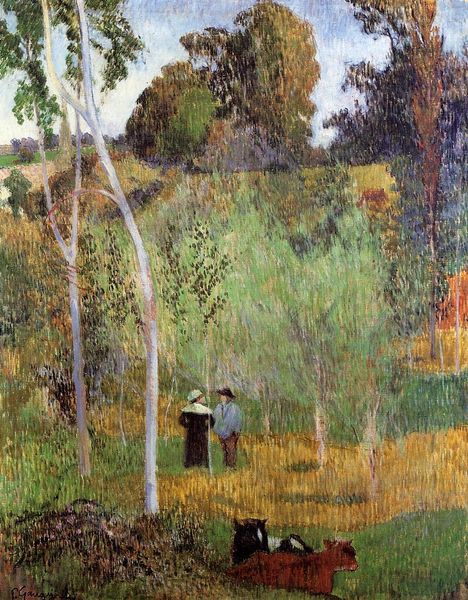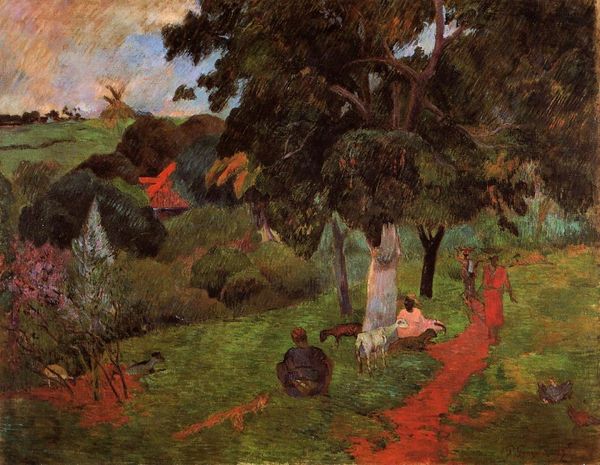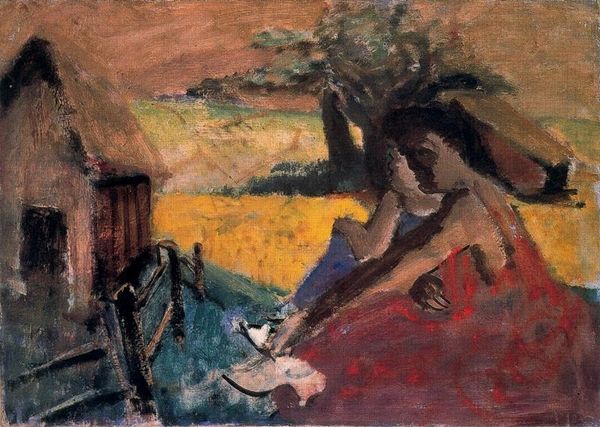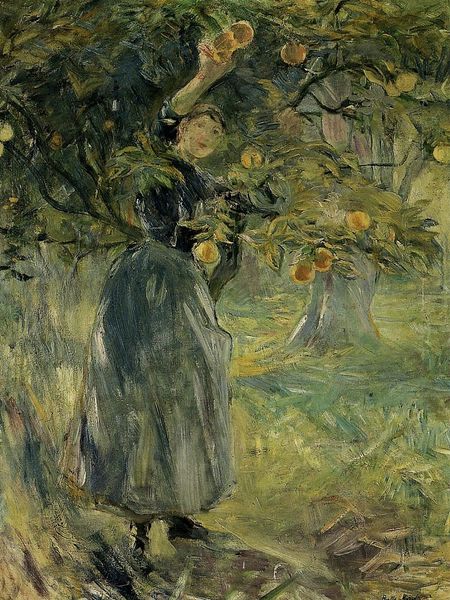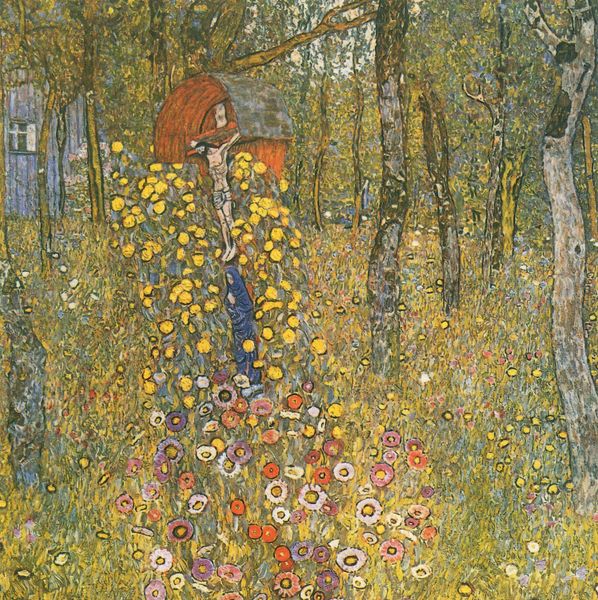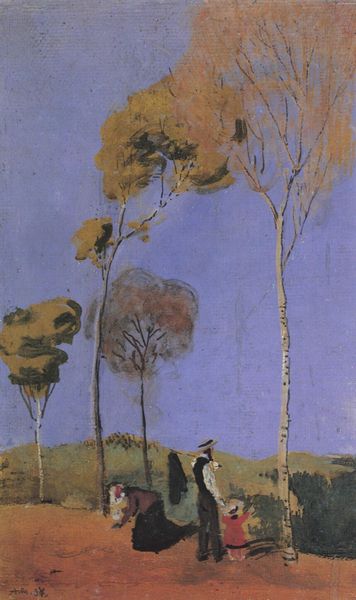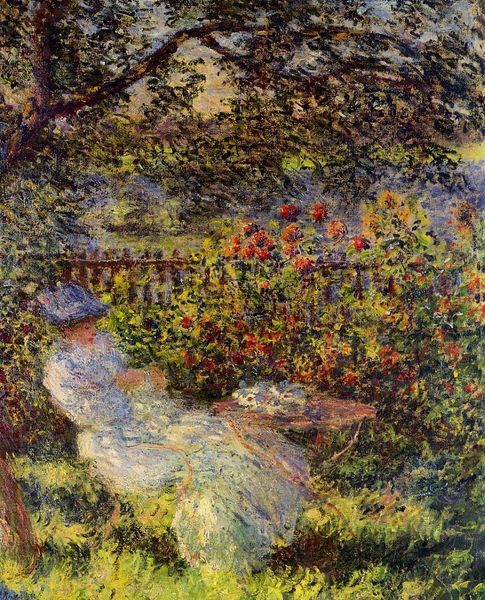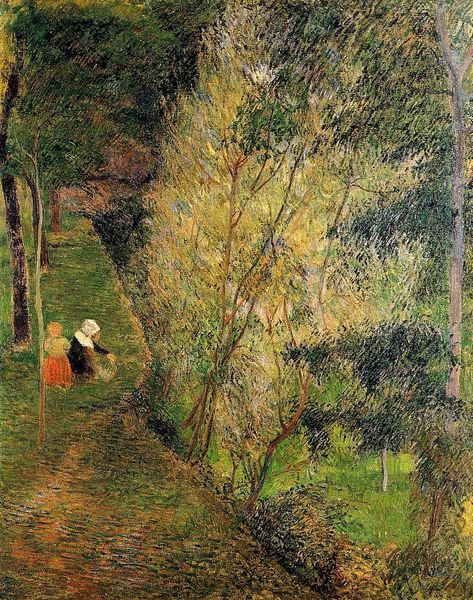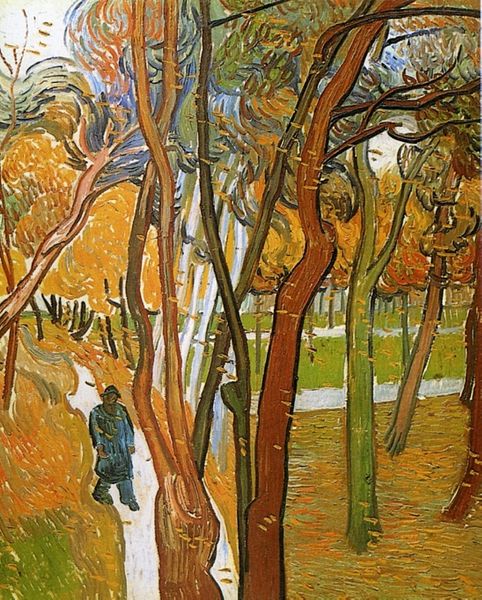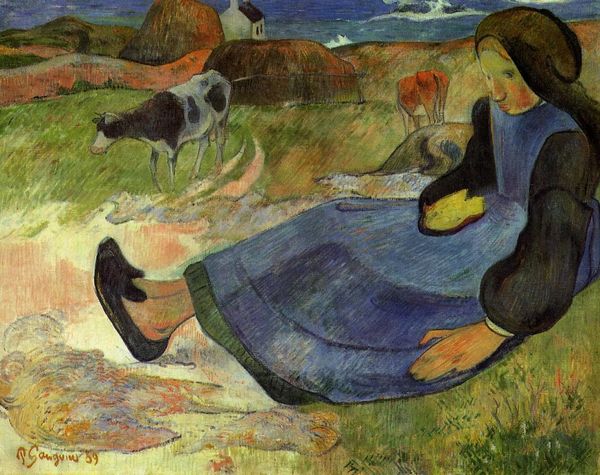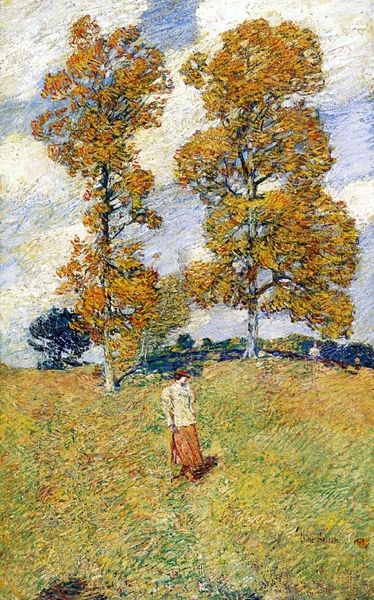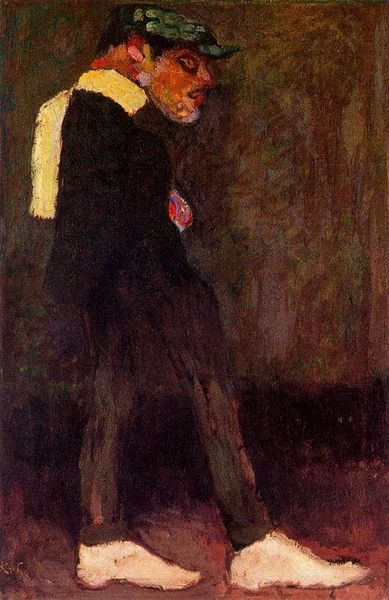
painting, plein-air, oil-paint, acrylic-paint
#
tree
#
narrative-art
#
painting
#
plein-air
#
oil-paint
#
landscape
#
acrylic-paint
#
figuration
#
plant
#
genre-painting
#
post-impressionism
Dimensions: 92 x 72 cm
Copyright: Public domain
Curator: What strikes me immediately is the overall tonal unity—a predominantly yellow-green palette pervades the canvas, imbuing it with a sense of shimmering light. Editor: It feels almost stifling, though. I’m interested in the labor represented here. You have a figure reaching for fruit; the act of harvesting suggesting human intervention shaping the natural world. I wonder, how was this work produced? What were Gauguin’s methods, and what were the material conditions surrounding its creation? Curator: We're looking at "Man Picking Fruit from a Tree," painted by Paul Gauguin in 1897, now held at the Hermitage Museum. Gauguin's use of color, moving away from direct representation, is central. Notice how he flattens the space, pushing forms towards the picture plane, a deliberate rejection of illusionistic depth. The figure, rendered in simplified forms, seems almost secondary to the decorative patterns created by the foliage. Editor: Interesting observation, but that foregrounds aesthetic experience. It is an oil on canvas – how did this painting operate in a specific economy of art objects at the time? Was this for commercial gallery exhibition or commissioned patronage? We need to also account for the economic systems, markets and forces that brought such material goods into existence. Curator: Undoubtedly relevant considerations. However, observe the way the rhythmic repetition of shapes and colors creates a harmonious whole. The lines guide the viewer's eye through the composition. The animals offer balance in form and add rhythm to this composition. It's this orchestration of elements that elevates it. The visible brushstrokes too – not just mere strokes, but constitutive elements forming the structure. Editor: I would counter by saying, where does the artist situate themselves within the network of raw materials, labor, exchange and waste inherent in producing works of art? Think of what else existed in that era: technologies, production techniques, social stratifications that shaped artistic labor. The sourcing of pigments for that yellow – was it local? Imported? What was its social value or extraction process? Curator: Fair points to consider when assessing the deeper impact. Though I'd note this work reflects a clear move towards subjective expression— away from academic tradition. Editor: Still, analyzing its materiality provides critical context for meaning. What stories are held inside layers of that canvas regarding labour? Gauguin sought "primitivism," yet was embedded within colonial trade routes and capitalist exchange. Let’s not forget this interaction when evaluating the artwork. Curator: A compelling counterpoint – a crucial expansion of our analysis beyond the aesthetic experience, forcing us to reconcile Gauguin's vision with material and labour politics. Editor: Indeed. By thinking about process, substance, and social background, the materiality enables alternate art viewing approaches.
Comments
No comments
Be the first to comment and join the conversation on the ultimate creative platform.
